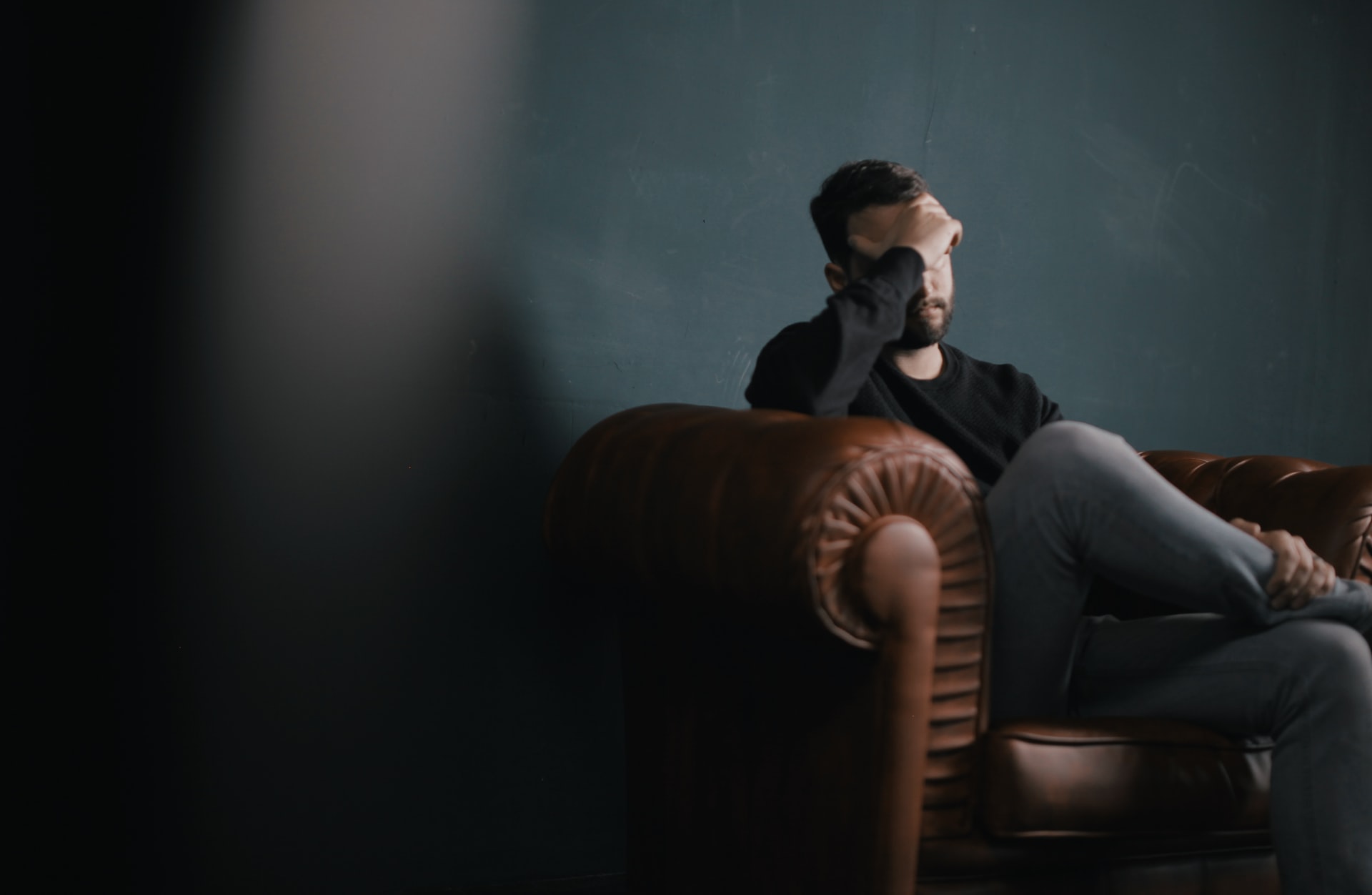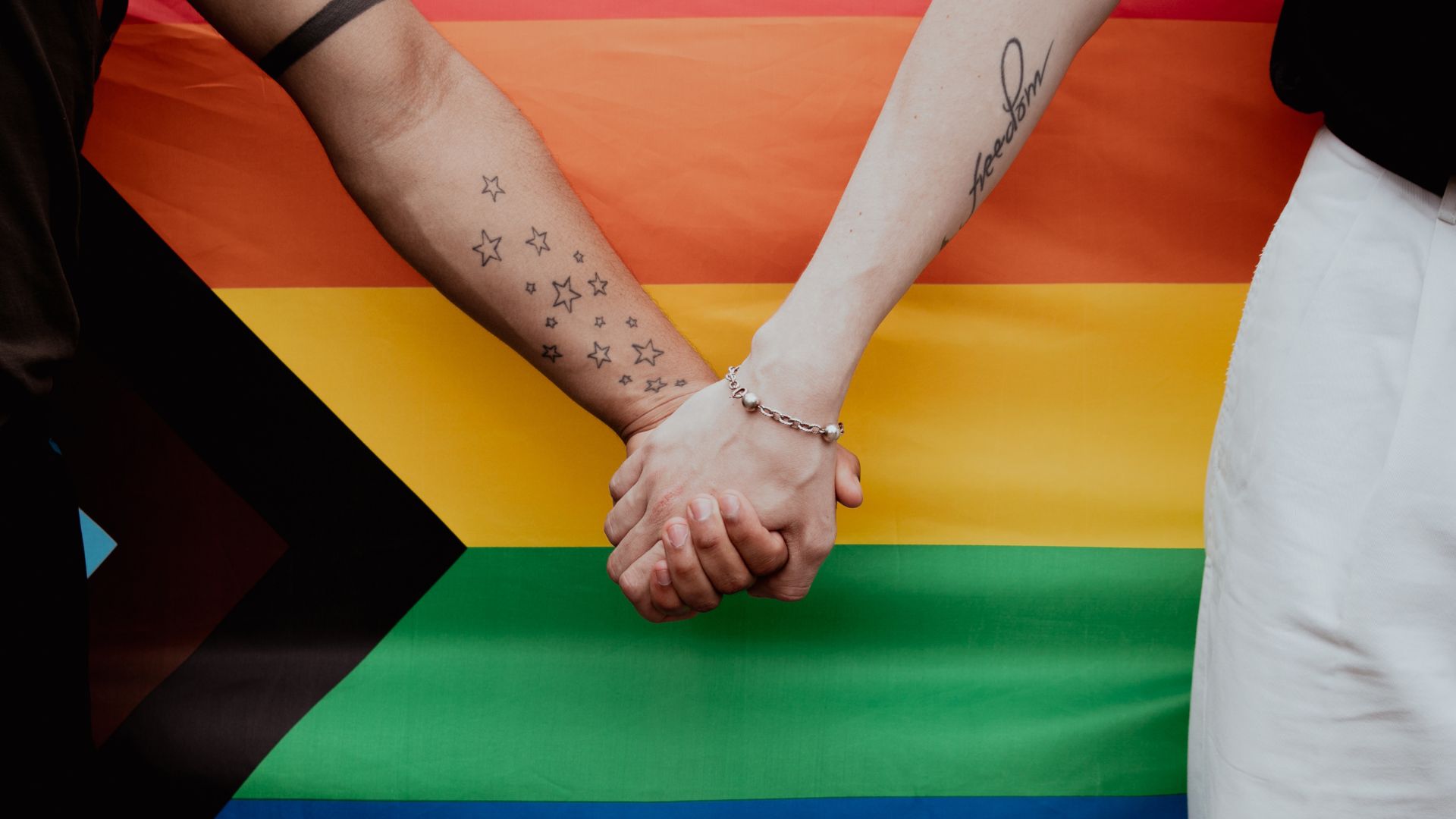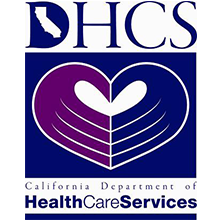WHO WE HELP
LGBTIA
An estimated 9 million Americans identify as lesbian, gay, bisexual, transgender, or queer (LGBTQ), according to the National LGBT Health Education Center.1 Although this is a large number of people, the LGBTQ population has important health needs that are often under-served and misunderstood by others.
For example, LGBTQ individuals are more likely to experience health disparities or differences from the general population. Examples of these health disparities include:
- Higher rates of HIV and sexually transmitted infections
- Higher rates of substance abuse and smoking
- Higher rates of depression and anxiety
- Higher rates of unhealthy weight control
- Lower rates of papsmear screenings and mammography

While LGBTQ individuals are more likely to experience healthcare disparities, they are unfortunately less likely to access care and are more likely to experience problems accessing healthcare.
LGBTQIA+ Residential Treatment
Sadly, the LGBTQ population has faced high levels of discrimination, misunderstanding, and even persecution. In the 1950s and 1960s, many practicing psychiatrists and therapists subscribed to the belief that homosexuality was a mental illness.4 Many people were forced into treatments to try and “cure” their illness, such as forced hospitalizations, electroshock therapy, and aversion therapy.
The 1960s and 1970s proved a progressive time for the rights of the LGTBQ community and helped to change many prevailing medical opinions. Advocates within the medical community and outside of it lobbied to help change people’s views of homosexuality in the United States and beyond. Their initial efforts started to help change the way the medical community viewed the LGBTQ population.
IT’S TAKEN LONGER TO ACCEPT THE TRANSGENDER COMMUNITY
Homosexuality isn’t the only identification present in the DSM. Until 2013, transgender status was listed as a “gender identity disorder” before the APA changed it to “gender dysphoria.” This term signifies that a person who is transgender may experience stress related to the fact that their gender identity doesn’t correspond to their sex at birth. However, not all people who are transgender experience gender dysphoria.
EFFECTIVE THERAPIES FOR OCD AND ADDICTION
In addition to medications, doctors also recommend therapeutic approaches for those who struggle with addiction and OCD. A common behavioral therapy approach is cognitive behavioral therapy (CBT). This approach involves identifying behaviors that lead to addiction or compulsive thoughts and teaching a person to change their thinking to more positive and effective options.
Doctors may use a specific CBT type called exposure and response prevention (EX/RP). This therapy involves exposing a person to their anxiety or fear in small doses and teaching a person how to better deal with the emotions they feel. This approach should only be employed by a medical professional.
History of Discrimination
Freud’s Progressive Acceptance
Throughout history, homosexuality has been treated in different manners by medical experts. For example, Sigmund Freud, the father of psychoanalysis, viewed homosexuality as an “inversion,” where some people naturally developed and found romantic interest in the same sex or both the same and opposite sexes.3 He did not view homosexuality as a mental illness, but instead a symptom that arose due to conflict within one’s self. In 1935, he wrote to a mother asking if she could convert her son’s homosexuality. In the letter, he wrote, “Homosexuality is assuredly no advantage, but it is nothing to be ashamed of, no vice, no degradation.”
American Psychiatric Association’s Regressive Classification
While Freud took a progressive and accepting view of homosexuality, later psychiatrists did not have the same approach. Many psychiatrists and therapists in the 1940s and 1950s viewed it as a moral wrong in addition to a psychiatric pathology. In 1952, the American Psychiatric Association (APA) classified homosexuality as a mental disorder, calling it a “sociopathic personality disturbance.” In 1968, the second and updated version of the Diagnostic and Statistical Manual of Mental Disorders (DSM) listed homosexuality as a “sexual deviation,” not as a sociopathic disturbance.
Fighting for Rights and Recognition
While the APA was not the only organization stigmatizing or adding further misconceptions about the LGBTQ community, they are one of the leading bodies in psychiatric care and therapy. As a result, advocates have often lobbied and protested specifically against this group to help change the medical community’s understanding of the LGBTQ community. For many years before the 1970s, LGBT activists have protested at the APA’s annual meetings. In 1970 and 1971, the APA welcomed the first gay-affirmative presentations at their annual meeting.
In 1978, a group of psychiatrists formed the Association of Gay and Lesbian Psychiatrists (AGLP). This was a major step for the community, as many medical professionals had been afraid to identify as LGBT for fear of losing their medical licenses and clients. Currently, the AGLP has more than 600 psychiatrists and further helps to shape policy and advocate for LGBT individuals. For more information on this organization and to find members, please visit www.aglp.org.
Issues Faced by LGBTQ Populations
The LGBTQ population is subject to the same mental illnesses and physical health conditions as everyone else. Researchers have also identified certain mental health concerns that are more prevalent in the LGBTQ community compared to others. This section will explore different issues that challenge the LGBTQ community.
Mental Health
According to the National Alliance on Mental Illness (NAMI), LGBTQ people are three times more likely to experience a mental health condition compared to those who are not. Examples of mental health disorders a person may face include generalized anxiety disorder, post-traumatic stress disorder, and major depression.
Greater Risk of Suicide in the LGBTQ Community
Higher Rates of Serious Mental Illness
Increased risks for mental health disorders unfortunately, also mean those in the LGBTQ community are at greater risk for suicide. According to NAMI, suicide is the leading cause of death for those ages 10 to 24 in the LGBTQ community. Sadly, LGBTQ youth are most affected by suicide rates that are four times higher than young people who aren’t in the LGBTQ community. Researchers have also identified that a person who didn’t have support after coming out to their family is eight times more likely to attempt suicide than a person who does have a supportive family.
Trauma
LGBT individuals can be subject to traumatic events that can shape their life and outlook. According to the HRC, transgender students who were denied access to the bathroom of the sex they identify with were 45 percent more likely to attempt suicide than those who are not.
LGBT individuals may also be victims of hate crimes, which can include physical and verbal abuse.6 One organization that helps LGBTQ students is Parents, Families, and Friends of Lesbians and Gays (PFLAG). You may visit their website at www.pflag.org.
Family Problems
LGBTQ individuals, unfortunately, face not only social isolation but also family rejection. Some families may throw out an LGBTQ child from their home. This may explain higher rates of homelessness among LGBTQ youth.
Being an LGBTQ person in a family who does not have another LGBTQ family member can be challenging in terms of helping family members understand the person’s lifestyle. Family members may react in a variety of ways, from concern and worry for the individual to rejection and blame, wondering if the family member did something to cause a person to identify as LGBTQ. As advocates make greater strides, more families are becoming accepting and have greater access to resources to help them process the information and support their loved ones.
Homelessness
The LGBTQ community faces higher rates of homelessness compared to those who do not identify as LGBTQ, according to the National Coalition for the Homeless (NCH). Some of the contributing factors to homelessness in this community is discrimination, family rejection, and social stigma.(7)
Homeless members of the LGBT community also face greater challenges in finding homeless shelters who understand and accept their lifestyle. As a result, they are more vulnerable to violence and abuse when seeking shelter. Of particular concern is the transgender community, which may be turned away from shelters due to their physical appearance.
Rates of homelessness among young LGBTQ people also occur at higher rates than in young heterosexuals. Unfortunately, there are no current federally supported programs specifically aimed at assisting LGBTQ homeless youth, according to the NCH.


SAMHSA Guidelines on Treatment
SAMHSA published a report titled “A Provider’s Introduction to Substance Abuse Treatment for Lesbian, Gay, Bisexual, and Transgender Individuals” after extensive research and polling of medical experts to help aid in the treatment of LGBT individuals who struggle with substance abuse.
According to SAMSHA, some of the key aspects of care a therapist should provide their LGBT client include:
•Respect the client and his or her frame of reference
•Recognize the importance of collaboration with the client
•Maintain professional objectivity
•Recognize the need for flexibility and be able to adjust strategies according to the client’s needs
•Appreciate their own role and power within the group
•Be non-judgmental and respectfully accepting of the client’s different values, culture, and behavior
Levels of LGBT-Sensitive Treatment for Recovery
While healthcare providers are receiving more training to learn how to better care for LGBTQ individuals, this training still represents a small portion of their overall medical training. According to the National LGBT Health Education Center, an average of five hours of clinical training in medical schools in Canada and the United States is devoted to the care of LGBT individuals.
Anti-LGBT Treatment
Anti-LGBT treatment creates a hostile environment in which those in the LGBT community feel marginalized or, at worst, excluded or stigmatized for their lifestyle. One such example is conversion therapy, where therapists use psychiatric methods to “convert” a person from their lifestyle to a heterosexual one. The APA and many other mental health organizations have spoken out against conversion tactics.
Traditional Treatment
According to SAMHSA, many treatment programs do not ask about a person’s sexual orientation. As a result, many people do not talk about their sexual orientation when they seek treatment for substance abuse, often because they’re unsure about how the healthcare provider will react. While the treatments may focus on a person’s mental illness or addiction, they do not address the whole person and how being a member of the LGBTQ community may impact their recovery.
LGBT-naïve Treatment
Treatments in an LGBT-naïve program acknowledge that not all persons participating in a recovery program or therapy are heterosexual. However, there are few (if any) emphases on issues and concerns a person in the LGBTQ community may face in their recovery.
LGBT-tolerant Treatment
LGBT-tolerant treatment is one where the therapist asks questions specific to a person’s lifestyle, when appropriate. This is typically approached in an individual therapy session as opposed to a group one.
LGBT-sensitive Treatment
Toggle ContentLGBT-sensitive treatment involves providing care in a manner wherein homophobia and bullying are not tolerated in the therapeutic environment. According to SAMHSA, many clients report finding peace and a sense of support by participating in LGBT-sensitive treatment. In addition, the therapist or facility providing treatments may offer specific programs or workshops to LGBT individuals.
LGBT-affirming Treatment
LGBT-affirming treatment programs provide the highest level of sensitivity for the LGBT population, the unique challenges and risk factors they have, and known best practices in recovery for the LGBT community.
Resources
- https://www.nami.org/Find-Support/LGBTQIbid.
- https://www.aglp.org/gap/1_history/
- https://suicidepreventionlifeline.org/wp-content/uploads/2017/07/LGBTQ_MentalHealth_OnePager.pdf
- https://nationalhomeless.org/issues/lgbt/
- https://store.samhsa.gov/system/files/sma12-4104.pdf
SAFE HARBOR TREATMENT CENTER
Addiction in the LGBTQ+ Community
Those in the LGBTQ community have often had a negative experience with one or more healthcare providers. This can affect a person’s willingness to seek treatment if they struggle with substance abuse.RATES OF ADDICTION
According to NAMI, an estimated 20 to 30 percent of those in the LGBTQ population struggle with substance abuse, while 9 percent of the general population suffers from substance abuse.
Alcohol and Cocaine Abuse Rates in the LGBTQ Community
Some data is available regarding addiction in individual LGBT populations. The Substance Abuse and Mental Health Services Administration (SAMHSA) reports as many as 30 percent of lesbians suffer from an alcohol abuse problem. Lesbians are also more likely to abuse cocaine at higher rates compared to heterosexual women. Another study from SAMHSA found that gay men and lesbians have a 20 to 25 percent rate of alcohol abuse, compared to an estimated 3 to 10 percent of heterosexuals.
Drug Use and LGBTQ Culture
Gay men and men who have sex with men (MSM) also abuse certain medications and drugs at higher rates than the heterosexual population. Gay men and MSM are more likely to use marijuana, hallucinogens, stimulants, sedatives, cocaine, MDMA, and barbiturates than heterosexual individuals. This statistic also makes relapse prevention efforts difficult in gay men, and MSM as the social scene and party culture are often a part of their lifestyle and where they have found acceptance, according to SAMHSA. (8)
RISK FACTORS
Several risk factors exist in the LGBTQ community that may make a person more vulnerable to suffer from substance abuse compared to heterosexuals. Examples include:
•Isolation
•Lack of education
•Living in an area that is traditionally unaccepting of LGBT individuals
•Poor self-esteem/negative self-concept
•Reliance on bars and clubs to find social support
•Unsupportive family
Additional Help: Mental Health Services
in the LGBTQIA+ Community
The Trevor Project and the It Gets Better Campaign offer a 24/7 confidential suicide hotline (866-488-7386) for struggling LGBTQ youth.
There are many other resources for those in the LGBT community who may not have access to LGBT-affirming treatments in their area. Examples of websites to visit include:
The National LGBT Health Education Center: www.lgbthealtheducation.org
The Center of Excellence for Transgender Health: www.transhealth.uscf.org
World Professional Association for Transgender Health: www.wpath.org
SAMHSA: www.SAMHSA.gov
These resources can provide an excellent start to helping you or a loved one find the care and support you need in your recovery and beyond.




